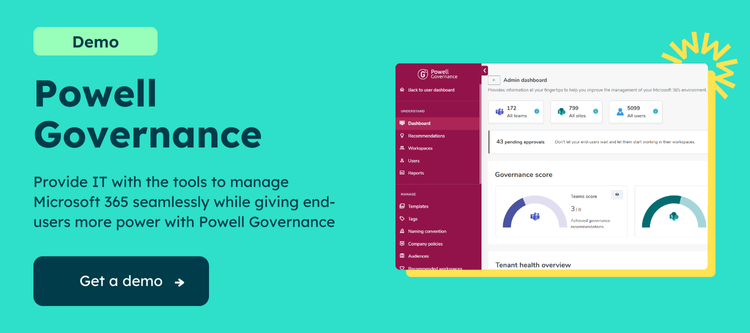User and device settings in Microsoft Teams
By default, every user in Microsoft Teams has settings that can be customized to fit their needs..
In the “Settings” menu, there are a few different tabs that you can use to customize your user experience: The “General” tab allows you to customize your language and time zone settings and choose whether or not to receive notifications for new messages and mentions.
The “Notifications” tab allows you to customize how and when you receive notifications from Microsoft Teams. You can receive notifications via email, push notifications, or both. You can also specify which channels you would like to be notified about and whether or not you want to hear a chime when new messages arrive.
The “Privacy” tab lets you control who can see your online status and set other privacy-related options, such as whether or not people can see when you were last active in Microsoft Teams.
The “Calls” tab contains your call history, missed calls, and options for recording.
Overview of User settings in Microsoft Teams
The Microsoft Teams settings are designed to give users control over their experience within the app. Users can adjust various settings, including:
- Notifications: Users can manage when and how they receive notifications from Microsoft Teams.
- Appearance: Users can select their preferred color scheme and font size for the app.
- Language: Users can choose which language they want Microsoft Teams to be displayed in.
- Input and output: Users can manage their audio and video settings and keyboard shortcuts.
- General: In this section, users can manage their preferences for chat, calls, and meeting recaps.
Managing device settings for remote work
If you are managing a remote workforce, you can do a few things to ensure your Team is using Microsoft Teams optimally. One of the most important things is to manage user settings for devices. You can access device user settings from the Microsoft Teams admin center. From here, you can add and remove users and change settings for individual users. There are a few different settings you can adjust for each user.
- The first is what type of device they are using. You can select from various options, including Windows, Mac, iOS, and Android.
- Once you have selected the device type, you can adjust the device’s specific settings.
- You can also decide which apps each user has access to. This is important if you want to limit what your Team has access to while working remotely
- Finally, you can add and remove devices from each user’s account. This is helpful if someone gets a new device or needs to change their primary device.
Managing guest access and external users
To maintain control over your company’s data and communications, it is important to manage guest access and external users in Microsoft Teams carefully. By default, any user with a valid email address can be added as a guest to an existing team, which can be done by clicking on the “Add guests” button in the Team’s settings. However, you can also restrict guest access to specific domains, which can be done by going to the “Guest permissions” tab in the Team’s settings. Additionally, you can control what type of content guests are allowed to access and whether they can create new teams.
External users are slightly different from guests because they do not have a Microsoft account associated with their email addresses. This means they will not be able to sign into Teams using their email address but will need to generate a special link to access the Team. External users also have more limited permissions than guests, such as being unable to add other members to the Team or create new teams.
Meetings and calls settings in Microsoft Teams
If you are using Microsoft Teams, you know that there are a ton of different Microsoft teams settings that you can adjust to make your meetings and calls more efficient and productive.
In the Settings menu, select Meetings & Calls. Here you will see a number of different options that you can adjust:
- Audio Settings: You can choose which audio device you want to use for your meetings and calls. You can also adjust your microphone and speaker volume and enable or disable automatic mic gain adjustment.
- Video Settings: This is where you control your video camera settings for meetings and calls. You can choose which camera to use and adjust the resolution, frame rate, and field of view. You can also enable or disable video preview before joining a meeting.
- Screen Sharing Settings: You control how others see your screen during a meeting or call. You can choose to share your entire screen.
Overview of Meetings and calls settings
Microsoft Teams is a powerful tool that can help you streamline your meeting and call settings for optimal collaboration. Here’s an overview of the different settings you can tweak to make sure your meetings are as productive as possible:
- Meeting Scheduling: You can set up Microsoft Teams to automatically schedule your meetings. This way, you don’t have to worry about double-booking yourself or forgetting to schedule a meeting altogether.
- Meeting Settings: There are several different meeting settings you can adjust, such as enabling video or audio conferencing, setting up screen sharing, and recording your meetings.
- Call Settings: If you frequently use Microsoft Teams for calls, there are a few settings you’ll want to adjust to optimize your experience. For example, you can enable call waiting so that you never miss a call, and you can set up voicemail so that people can leave messages if you are unable to answer their call.
- By adjusting your Microsoft Teams settings for meetings and calls, you can save yourself a lot of time and frustration in the long run.
Customizing and managing Teams meeting policies
One area where you can optimize your Team’s settings is in the meeting policies.
There are a few key things to keep in mind when customizing your Team’s meeting policy:
- First, consider what type of meetings you will be having most often. Are they internal team meetings? Client calls? Brainstorming sessions? Knowing the purpose of most of your meetings will help you tailor the meeting policy to fit those needs.
- Secondly, think about who will be attending the meetings. Will it just be members of your Team? Or will outside clients or vendors need to join in as well? If you have a mix of internal and external attendees, you will want to ensure that your meeting policy accommodates both groups.
- Finally, take into account any company-wide policies that might impact your Team’s meeting policy. For example, suppose your company has a strict confidentiality policy. In that case, you will want to ensure that all Teams meetings have appropriate security measures in place (e.g., password protection, PIN codes, etc.).
Once you have considered these factors, you can customize your Team’s meeting policy. Go to the “Meetings” tab in the Settings menu and click “Meeting Policies.” From here, you can create a new policy or update the already existing policy
Managing phone system and calling plans
If you are using Microsoft Teams for your business, you will want to ensure that you have the right settings for optimal collaboration. One important part of this is managing your phone system and calling plans.
- Make sure you have a reliable VoIP provider offering good call quality and features.
- Consider getting a dedicated business phone number for your Team. This can make it easier for customers and clients to reach you and help with branding.
- Set up call forwarding so that calls can be directed to the right person or department. This can help ensure that no call goes unanswered.
- Use call groups to create teams of people who are responsible for answering calls. This can be a great way to distribute workload and ensure that calls are always answered promptly.
By taking care of these details, you will be able to focus on more important things – like growing your business!
Live events and recording settings in Microsoft Teams
When it comes to collaborating with others, Microsoft Teams offers a variety of features and settings to ensure everyone is on the same page. For example, you can use the live events and recording settings to ensure that all team members can participate in and view recordings of meetings, presentations, and other events.
Go to the “Settings” tab in Microsoft Teams to access the live events and recording settings. From there, click on the “Live Events” tab. On this page, you will see various options for configuring how live events and recordings behave in your Microsoft Teams environment.
By configuring these settings, you can ensure that everyone on your Team can participate in and benefit from these features.
Overview of Live events and recording settings
Live events and recording settings in Microsoft Teams provide users with a wealth of options for customizing their experience. Users can choose to record their live events, or they can opt to view them. Additionally, users can select the audio and video quality settings that best suit their needs. And finally, users can also specify whether or not they would like to have their live event available for on-demand playback.
Creating and managing live events
When it comes to hosting live events, Microsoft Teams has you covered. You can create and manage live events directly from within the app, making it easy to keep your team members up-to-date on what’s happening. To create a live event, click the “Create” button at the top of the screen and select “Live event.” You will be prompted to fill in basic information about your event, such as the name, date, time, and location. Once you’ve got all that set up, click “Create,” and your event will be good to go. If you need to make any changes to your event after its creation, click the “Edit” button and adjust any details as needed. When you are finished making your changes, click “Save,” and they will be reflected in your event. When it is time for your live event to start, click the “Start” button, and you will be good to go. Your team members can view the event in real-time and ask questions or leave comments using the built-in chat function.
Managing recording settings and compliance
When it comes to managing your Microsoft Teams recording settings and compliance, there are a few key things to remember. First and foremost, you will want to ensure that all of your recordings comply with relevant regulations or laws. This means ensuring that all personally identifiable information (PII) is redacted or removed from the recordings.
Next, you will want to consider how you want to store and access your recordings. You can store them locally on your own devices or in the cloud for easy accessibility. Whichever option you choose, just be sure to have a backup plan in case of any technical issues.
Also, consider who needs access to your recordings and how they will be used. If you’re recording sensitive meetings or calls, you may only want select individuals to have access. Alternatively, make them more widely available if you’re using recordings for training or reference purposes.
Microsoft Teams can be an extremely powerful tool for collaboration and communication in today’s digital workplace. By streamlining your settings, you can ensure that you get the most out of it and optimize its features to maximize efficiency and productivity. Whether you are a small business or a large enterprise, setting up Microsoft Teams correctly is essential to ensuring successful collaborations among teams.




